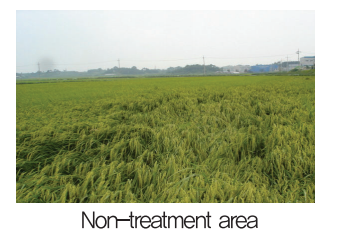Metabolism of silicon in plants
In case of aquatic flowers and plants such as rice, silicon is recognized as an essential element. In case of rice, lack of silicon causes necrosis or forgery in the leaf after the growth and consequently the yield is greatly reduced. The nutrient requirements of the growing plant are relatively low, but requires a large amount of silicon in the reproductive system Silicon is also found to be essential elements for tomatoes and cucumbers. In case of crops such as tomatoes and cucumbers, The lack of silicon causes little effect on the flowering stage. However, after the flowering period, it can cause deficient of leaf growth interfere in the action of water and even disturb fruit bearing. In particular, fertilization of silicon is used to prevent diseases such as powdery mildew on cucumber and amber and it is used to increase firmness and hardness by the fertilization of silicon.
GUARANTEED ANALYSIS

Characteristics and Effects
-Bio-Sil stimulates stem and leaf siting and strengthens the tissue to increase resistance to various disorders.
- It increases the cel strength of the endothelial cell wal and alleviates water stress and aleviates wilting.
- It is good for parasitic leaf of cucumber and lodging protecting of rice. green onion and red pepper. Increasing resistance of strawberry, lettuce, and thickening leaves of watermelon, oriental melon and rose. It is also very good for crops with poor resistance.
- It is effective to prevent lodging caused by excessiveness of nitrogen.
- It is stable in pH, easily absorbed into crops, does not have excess trouble, is a coloid type product which can do foliar fertilization and absorbs quickly.
How to use

Cautions
- Shake well before use.
- Store between 5 °C and 30 °C. Do not store below 0 °C.
- Avoid mixing with calcium agent and it is possible to mix it with water soluble fertilizer.
- It is possible to mix it with pesticides or fertilizers, but it is recommended to test at small area for with special products.

